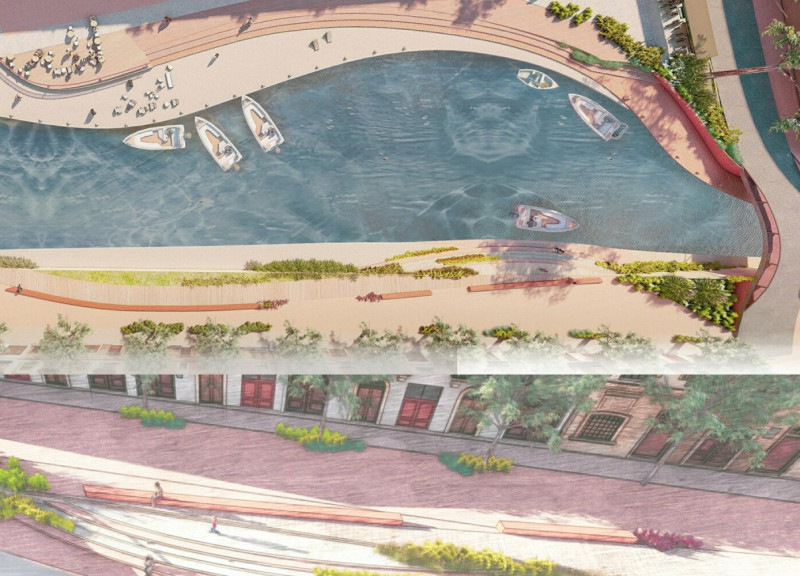5 key facts about this project
The design for the Navigli Canal in Milan focuses on creating a lively urban area that connects the community with the waterway. This project aims to enhance the canal's role as a public space, making it both useful and enjoyable for locals and visitors alike. It welcomes the possibility of diverse activities while also addressing environmental concerns, such as flood management and water quality.
Design Concept
The initiative, titled "Re-opened Canal: The Flowing Duet," positions the canal as a central feature of the city. It will play an important role in managing rainwater, improving water quality, and supporting local wildlife. The design uses the main canal bed as a foundation, which will support a variety of water features and spaces for recreational use, making the area more dynamic.
Transportation Modes
A key aspect of the design is the inclusion of different modes of transportation. There will be paths for walking, dedicated lanes for cycling, and routes for vehicles. This arrangement not only improves mobility but also encourages people to choose walking or biking over driving. It creates an inviting space where pedestrians can move freely along the canal, enhancing the experience for everyone.
Community Spaces
Several areas have been set aside for community activities along the canal. The design includes parks, greenways, and ecological corridors that promote interaction among people. Vertical traffic routes will also be integrated, allowing for mixed-use spaces that may serve as homes or offices. By creating these attractive spaces, the design encourages social gatherings and daily engagement with the waterfront.
Landscape Design
The landscape design incorporates various features that enrich the canal's surroundings. Pocket gardens provide spots to relax, while wharfs and bridges invite exploration. Viewing decks offer scenic perspectives of the water, and slope terraces create inviting areas for play and relaxation. These elements aim to enhance the recreational opportunities available throughout the seasons, drawing people toward the water and creating a lively atmosphere.
The overall design emphasizes practical solutions that improve both the environment and the daily lives of those who live and work around the canal. Carefully placed greenery and engaging water features create an appealing setting that encourages community interaction and appreciation of the natural landscape.






















































